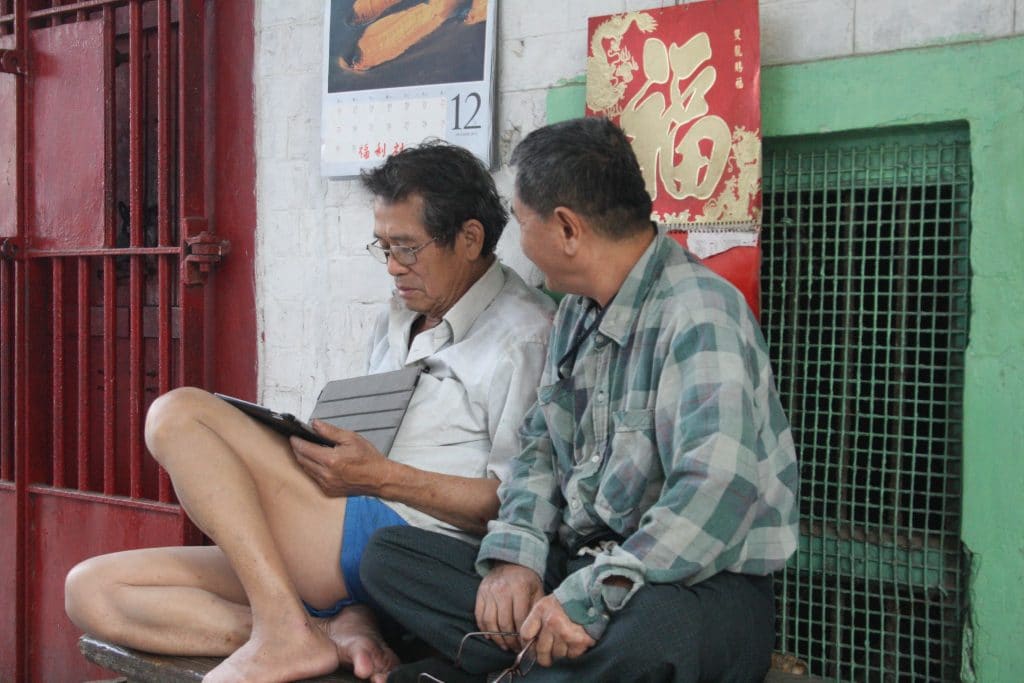The “Kitchen Gods” sets forth from Tangra in east Kolkata every year to heaven to submit their annual reports about the activities of their households to the Jade Emperor. In recent decades, the reports are not looking good.
Chun Chi (Chinese New Year or the Lunar New Year) is still celebrated in Tangra, as are the Spring, the Moon, and the Lantern festivals. But the once-thriving Chinese enclave, which hummed with nearly 350 tanneries and 25,000 Chinese, is in decline, dwindling to under 1,400 ethnic Chinese residents. Most original descendants of Chinatown have scattered throughout the metropolis over the last several decades to Dharamtolla, Park Circus, Bowbazaar and Tiriti Bazar, as well as to other parts of India.
Tourists still venture into Tangra, attracted by its distinctive Hakka Indian Chinese fusion cuisine, and to be regaled by stories about Tong Achi, who introduced Bengali babus to “cheeni” (sugar) and cheap spirit arrack produced from molasses at his “Cheeni Mill.”
The Chinese story in Kolkata begins with Yang Tai Chow (known as Tong Achi by locals), who in 1778 became the first Chinese to arrive in Kolkata, according to historical documents. He opened a “Cheeni Mill” at Budge Budge near Hooghly River.
The factory needed labor and Chow needed workers who spoke Mandarin or Hakka. These were the hay days of piracy, slave trade, kidnapping, migrations and sea trade. A large number of kidnapped Chinese in the slave ships of Portuguese traders would anchor at the Khidderpore docks off Kolkata. Many jumped ship and swam ashore, where Chow gave them shelter and employed them in his sugar factory. Political conflicts and wars in China also prompted land and sea migration from Fukien, Canton and other parts of the country. Kolkata and Chow were natural magnets. Nearly 38 Chinese families settled into Budge Budge and the first modest Chinatown emerged in Kolkata.
It was during the life and time of Chow, the “Cheeni-wallah,” who fell in love with and married a Bengali Muslim woman, that the three tiny hamlets — Govindapur, Sutanuti and Kolikata — began sprawling into Chinatown.
The 1837 Census by the East India Company recorded 362 ethnic Chinese in Kolkata. In 1849, C. Alabaster, a traveler, visited Kolkata and reported that a large number of carpenters, leather workers, cooks and opium sellers from Canton were living in the city and also had built a temple in Bow Bazar dedicated to the Sea Goddess Tianhou (Heavenly Spouse), a deity generally worshipped by seafarers. They had also built a big Temple of Guan Yu, the god of war, in Dharamtolla (Chowringhee) and met there regularly.
By 1947, the Chinese population in Chinatown had swelled to 23,000. As recently as 1966, an estimated 15,000 Chinese lived in the enclave; but their numbers have dwindled to under 2,000 now.
Recently, the West Bengal Tourism Development Corporation has announced plans to spruce up long-neglected Tangra as a tourism destination. Perhaps the move will prevent the Chinese lanterns in Tangra from being fully extinguished.
Photos Abhishek Home Chowdhury
